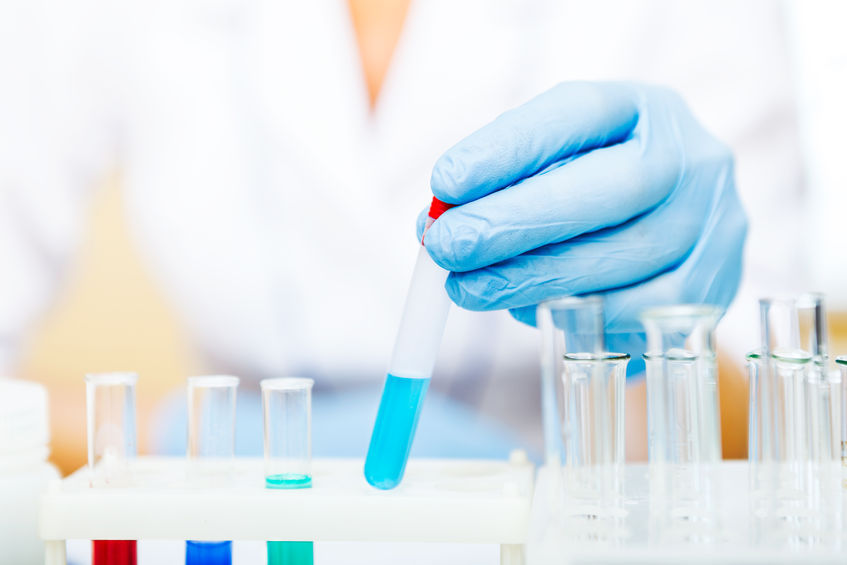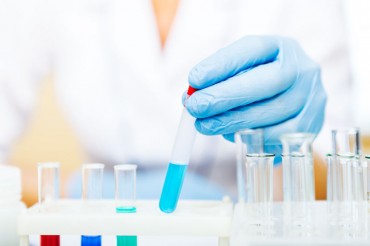SYDNEY, Australia, Jun. 21 (Korea Bizwire) — SpeeDx Pty. Ltd. today announced clinical data contained in a new study published in the June 2018 issue of Clinical Infectious Diseases1 [ link] supports the use of Resistance Guided Therapy for more effective treatment of Mycoplasma genitalium infections. Using the SpeeDx ResistancePlus® MG test, the authors recorded an overall cure rate of >92%, a significant increase compared with previous cure rates of 67% prior to using Resistance Guided Therapy. ResistancePlus MG test simultaneously detects the sexually transmitted infection (STI) M. genitalium and the genetic markers linked to antimicrobial resistance (AMR).
The test is CE marked and in use across Europe, and available in laboratories across Australia and New Zealand. Clinical trials are underway in the U.S. in preparation for de novo clearance for the test with the U.S. Food and Drug Administration.
“This is a seminal publication demonstrating a remarkable improvement in treating what has essentially become an STI superbug,” said Colin Denver, SpeeDx CEO. “Using diagnostics to define appropriate treatment decisions is key when dealing with the global health threat of antimicrobial resistance.”
Senior study author Associate Professor Catriona Bradshaw has worked on M. genitalium for 15 years. “I’ve seen resistance to azithromycin, the frontline recommended treatment for M. genitalium infection, rise to over 50% in Melbourne over the last decade,” she said. “Unfortunately, it’s now a situation mirrored in many countries around the world.”1
Within the context of high level resistance and ongoing use of azithromycin – which helps to further increase macrolide resistance – the team developed a three-tier treatment pathway. The first step was switching from azithromycin to doxycycline for initial treatment, and then using the ResistancePlus MG test to detect macrolide resistance biomarkers. If macrolide resistance was detected, patients were treated with a quinolone antibiotic (sitafloxacin) to avoid unnecessary and ineffective use of azithromycin. If macrolide resistance was not detected, the patient was given a higher than standard dose of azithromycin over 4 days to reduce the development of de novo resistance.
Importantly, using doxycycline for initial STI treatment reduces overall use of azithromycin and reduces bacterial load, which the authors hypothesise improves the effectiveness of subsequent macrolide or quinolone treatment. Ongoing work will evaluate the use of moxifloxacin rather than sitafloxacin following doxycycline, as this agent is more widely available.
Data from this study has already influenced recent STI management guideline updates in Australia2 and the United Kingdom3, with recommendations to use doxycycline upfront and to assess the resistance status of M. genitalium infections in order to guide appropriate treatment. Using diagnostics to define appropriate treatment decisions is in line with recent recommendations on global management of AMR.8 Resistance Guided Therapy results in a more effective use of antibiotics, curtails the use of inappropriate prescribing and helps preserve the use of key medicines needed to combat the global rise of antimicrobial resistance.
About M. genitalium
M. genitalium is a sexually transmitted infection (STI) that can cause symptoms such as urethritis, cervicitis, endometritis and pelvic inflammatory disease. In recent studies, it has been found to have a higher prevalence than gonorrhoea.4 Like gonorrhoea, M. genitalium is also evolving into a so-called STI superbug that is becoming resistant to many antibiotic treatments leading to exceedingly difficult to treat infections and threatening global public health. Macrolide antibiotics, specifically azithromycin, are the first-line treatment for the rapidly growing problem of M. genitalium STIs, but resistance to these antibiotics has increased up to 50% in several countries.1,5,6 Due to this growing antibiotic resistance problem, several global STI Management Guidelines on M. genitalium Infections recommend complementing the use of molecular testing to detect M. genitalium with an assay capable of detecting macrolide resistance-associated mutations.2,3,7
Currently, there is not a Food & Drug Administration (FDA) cleared molecular diagnostic test for the detection of M. genitalium in the US. The SpeeDx ResistancePlus® MG assay is CE marked for sale in Europe and TGA approved for sale in Australia. The test provides valuable detection and antibiotic resistance information to clinicians in a rapid time frame. Timely detection of antibiotic resistant infections enables better treatment of the disease for patients, lessens the potential for spreading among vulnerable populations and combats antibiotic resistance.
About SpeeDx
Founded in 2009, SpeeDx is an Australian-based private company with offices in London and the US, and distributors across Europe. SpeeDx specializes in molecular diagnostic solutions that go beyond simple detection to offer comprehensive information for improved patient management. Innovative real-time polymerase chain reaction (qPCR) technology has driven market-leading multiplex detection and priming strategies. Product portfolios focus on multiplex diagnostics for sexually transmitted infection (STI), antibiotic resistance markers, and respiratory disease. For more information on SpeeDx please see: https://plexpcr.com
- Read T R H, Fairley C K, Murray G L, et al. Outcomes of resistance-guided sequential treatment of Mycoplasma genitalium infections: a prospective evaluation, Clinical Infectious Diseases, ciy477, https://doi.org/10.1093/cid/ciy477
- http://www.sti.guidelines.org.au/sexually-transmissible-infections/mycoplasma-genitalium
- https://www.bashhguidelines.org/media/1146/ngu-update-05_2017-final.pdf
- Miller WC, Ford CA, Morris M, et al. Prevalence of chlamydial and gonococcal infections among young adults in the United States. JAMA 2004; 291:2229–2236.
- Getman D, Jiang A, O’Donnell M, Cohen S. 2016. Mycoplasma genitalium prevalence, coinfection, and macrolide antibiotic resistance frequency in a multicenter clinical study cohort in the United States. J Clin Microbiol 54:2278-2283.
- Murray GL, Bradshaw CS, Bissessor M, et al. Increasing Macrolide and Fluoroquinolone Resistance in Mycoplasma genitalium. Emerging Infectious Diseases. 2017;23(5):809-812. doi:10.3201/eid2305.161745.
- Jensen JS, Cusini M, Gomberg M, Moi H. 2016. 2016 European guideline on Mycoplasma genitalium infections. J Eur Acad Dermatol Venereol. PMID: 27505296.
- O’Neill J. The Review on Antimicrobial Resistance. May 2016:35.
Contacts:
First Author:
Tim Read
NHMRC Research Fellow, Central Clinical School, Monash University
Sexual Health Physician, Melbourne Sexual Health Centre
tread@mshc.org.au
+61 3 9341 6255
Europe, Australia, New Zealand
Madeline O’Donoghue
madelineo@speedx.com.au
+61 2 9209 4170
United States
Rick Roose
roi.roose@gmail.com
+1 415 202 4445
Source: SpeeDx Pty Ltd via GLOBE NEWSWIRE








